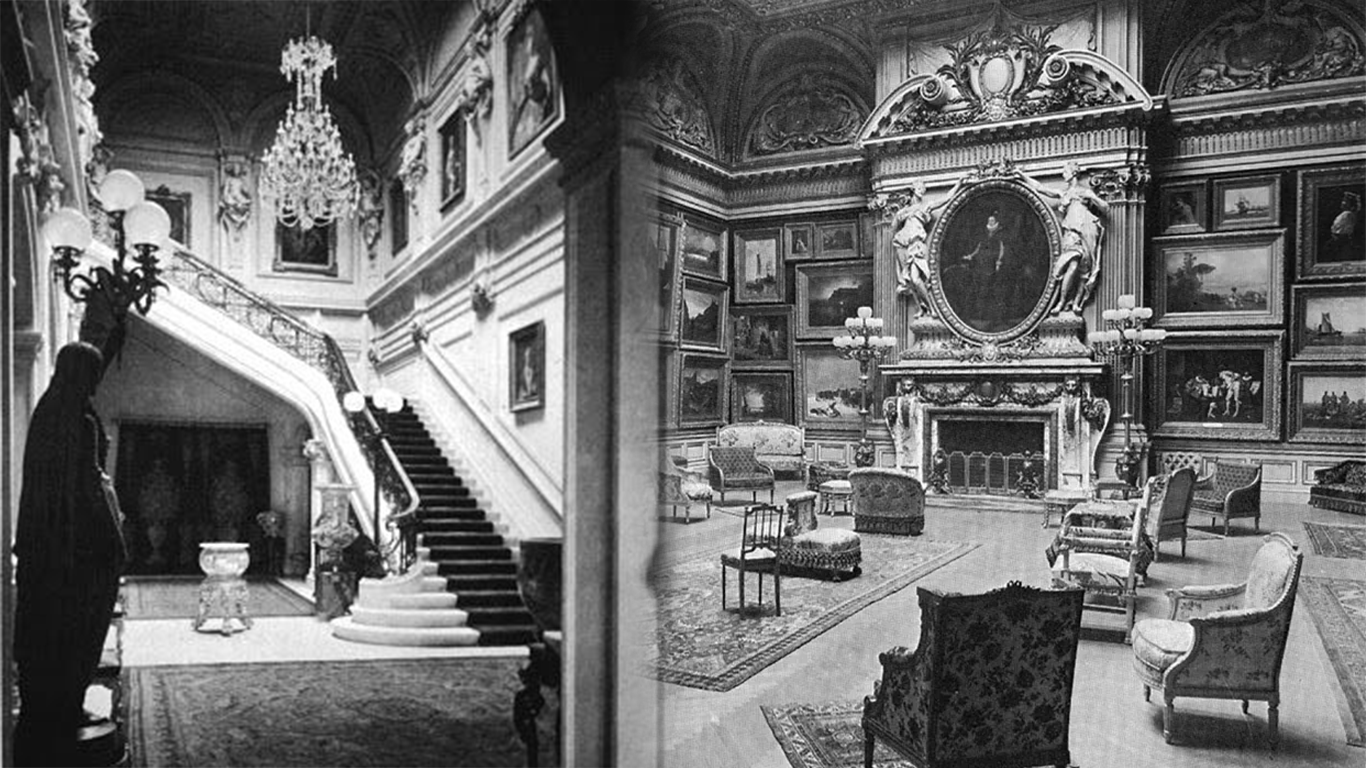Mrs. Astor’s “double palace” on 5th Avenue facing Central Park. Photograph of Mrs. Astor to the left.
In the Gilded Age of the late 19th century, New York Society underwent a remarkable transformation, shaped by the indomitable presence of Mrs. Caroline Astor. Known as the undisputed queen of high society, Mrs. Astor played a pivotal role in molding the social landscape of New York City. Her influence extended beyond her opulent mansions and lavish parties, leaving an enduring legacy that defined an era.
Early Life and Social Ascent:
Born Caroline Webster Schermerhorn in 1830, Mrs. Astor hailed from a prestigious Dutch family with a history deeply intertwined with New York's elite. Her early years were marked by private education and exposure to the intricacies of high society, providing her with a solid foundation for the role she would later play.
In 1853, Caroline married William Backhouse Astor Jr., heir to one of the wealthiest families in the United States. This union catapulted her into the upper echelons of New York Society, setting the stage for her ascent to social prominence. As a woman of sophistication, charm, and impeccable taste, Mrs. Astor quickly became a trendsetter, setting the standard for social etiquette and refinement.
The Four Hundred:
Mrs. Astor's influence reached its zenith with the establishment of the "Four Hundred," a list she purportedly compiled, limiting the number of individuals deemed socially acceptable for her exclusive gatherings. This list became the social bible of the Gilded Age, determining who gained entry into the most prestigious events. Her stringent control over the guest list solidified her position as the gatekeeper of New York Society.
The Calling Card
Nothing was more coveted than an audience with the Mrs. Astor. A calling card from Mrs. Astor was to be given a golden ticket into the upper echelons of society.
Personal Relationships:
Mrs. Astor's personal relationships played a crucial role in shaping her influence. Her alliances with influential figures such as Ward McAllister, the leading arbiter of American society, and her friendship with prominent families like the Vanderbilts and the Morgans, further solidified her standing. These connections not only elevated her social status but also allowed her to exert considerable influence over the city's social elite.
Mansions and Extravagant Affairs:
Mrs. Astor's mansions were emblematic of her opulence and grandeur. Her primary residence, the Astor Mansion on Fifth Avenue, became a symbol of aristocratic splendor. Lavish parties hosted within its walls were legendary, attended by the crème de la crème of society. Mrs. Astor orchestrated these events meticulously, ensuring they became the epitome of refined elegance.
(Left) Mrs. Astor’s side of the double palace. Her son, JJ Astor and his wife, occupied the South side of the mansion. (Right) Mrs. Astor’s new ballroom could accommodate more than 1,200 guests.
Legacy and Conclusion:
Mrs. Caroline Astor's legacy endures as a defining chapter in the history of New York Society. Her unwavering influence, marked by the establishment of the Four Hundred and her opulent gatherings, left an indelible mark on the cultural fabric of the Gilded Age. The queen of high society, Mrs. Astor's impact extended far beyond her lifetime, shaping the trajectory of social dynamics in the heart of the burgeoning metropolis even to this very day.




